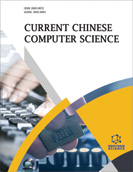- Home
- A-Z Publications
- Current Chinese Computer Science
- Issue Home
Current Chinese Computer Science - Current Issue
Volume 2, Issue 1, 2022
- Computer & Information Sciences
-
-
-
Similarity Measures and Their Applications in Multiple Attribute Decision-Making Under Cubic Hesitant Environment
More LessAuthors: Yohannes Belayneh, Rui Yong and Yingying ZhangBackground Cubic Hesitant Fuzzy Set (CHFS) is a hybrid set that can express uncertain and hesitancy fuzzy information simultaneously. Objective In this paper, we introduced three trigonometric similarity measures (e.g., cosine, tangent, and cotangent similarity measures) to measure the degree of similarity between the alternative and the ideal set under the CHFS environment. Various desirable charact Read More
-
-
-
-
Towards Highly Intelligent Image Processing Techniques for Rice Diseases Identification: A Review
More LessBy R. ManavalanBackground Rice is cultivated worldwide as one of the primary food crops. The responsible factors that rigorously affect rice crops' production are pests and various rice plant diseases, leading to considerable reduction in the agrarian and global economy. More sustainable farming methods for determining disease levels and the quality of paddy plants will be essential in the future. Objective The disease discovery in rice crops by Read More
-
-
-
An Image-Based Information Hiding Approach with Chaotic Systems and Optimized Security
More LessAuthors: Abdiqani A. Saliban and Yinglei SongBackground Recently, information hiding has become an important approach to securely storing and transmitting important information in digital media. Objectives This paper proposes a new approach to hide information in a color image with optimized security. Methods The approach performs the hiding in two phases. Firstly, the information that needs to be hidden in an image is represented by a sequence of binary bi Read More
-
-
-
An Overview of Face Image Forgery Detection
More LessAuthors: Defen He, Shuai Liu, Xin Jin, Shanshan Huang and Qian JiangWith the development of face forgery techniques, the spread and malicious abuse of forged images have become a thought-provoking problem, and the face forgery detection technique has also attracted people's attention. Academia has carried out in-depth research and discussion on detection techniques. This review discussed different face forgery methods and detection techniques. Four categories of detection meth Read More
-
Volumes & issues
Most Read This Month Most Read RSS feed
Article
content/journals/cccs
Journal
10
5
false
en


